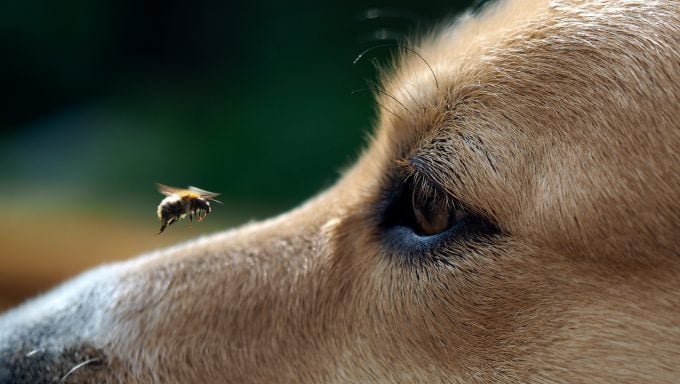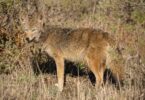[ad_1]

(Photo credit: kozorog / Getty Images)
Summer is here and that means bees! It’s essential for dog owners to keep their pups safe from bees, as bee stings can cause discomfort, pain, and even allergic reactions in your beloved fur baby. While dogs may be naturally curious and prone to investigating buzzing insects, there are several precautions you can take to minimize the risk of bee stings and ensure their well-being. By following some simple guidelines and remaining vigilant during outdoor activities, you can create a safer environment for your furry friends. Here are some valuable tips to help you keep your dog safe from bees.
How to keep your dog safe from bee stings
Supervise outdoor activities
Whenever your dog is outside, especially in areas with flowers or beehives, keep a close eye on them. Dogs are naturally curious and may try to investigate buzzing bees or swat at them with their paws, which could lead to a bee sting.
Avoid attracting bees
Minimize factors that might attract bees to your yard or outdoor areas where your dog spends time. Keep garbage bins tightly sealed, remove or cover sweet-smelling and flowering plants that attract bees, and clean up fallen fruits or spilled sugary liquids.
Create a secure outdoor environment
If you have a backyard or outdoor area, consider creating a secure and enclosed space with baby gates or fencing where your dog can play. This can prevent your dog from wandering into areas where bees might be present, such as around beehives or flower beds.
Educate your dog
Train your dog to be cautious around bees and other insects. Teach them basic commands like “leave it” or “stay” to help redirect their attention away from buzzing insects. This can be particularly helpful during walks or outdoor activities.
Avoid scented dog products
Be cautious about using scented shampoos, conditioners, or other grooming products on your dog. Strong floral or sweet scents can attract bees and increase the likelihood of an encounter.
Check for bee activity
Before allowing your dog to roam freely in a new area, check for signs of bee activity. Look for buzzing bees, beehives, or swarms in the vicinity. If you spot bees, it’s best to keep your dog away from that area.
Know the signs of a bee sting
Familiarize yourself with the signs of a bee sting in dogs, such as swelling, redness, pain, or signs of distress. If your dog gets stung, monitor them closely for any allergic reactions, which could include difficulty breathing, excessive swelling, or collapse. If you suspect an allergic reaction, seek immediate veterinary attention.
Remove stingers carefully
If your dog does get stung by a bee, try to remove the stinger as soon as possible. Use a credit card or a blunt object to scrape the stinger out in a sideways motion. Avoid using tweezers or squeezing the stinger, as this can release more venom.
Consult your veterinarian
If your dog has a history of severe allergic reactions or if they have been stung multiple times, consult your veterinarian. They may recommend carrying antihistamines or other emergency medications to manage potential reactions.
ChatGPT assisted in the creation of this article.
[ad_2]
Source link




Leave a Comment